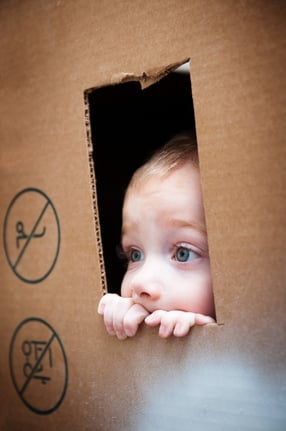Do you remember your first fort?
What was it like? Did you make it out of sofa cushions? Out of snow? Up in a tree?
Kids love to build forts. And in a way, they need to build forts.
Speaking to the parenting website Kinstantly, educator David Sobel of Antioch College says creating forts, playhouses,and other hideouts comes from a universal drive children have to make their own places.
Sobel has found such places all over the world, in the woods, in the desert, in canyons and of course, in suburban backyards. He’s written a book on the subject (Children’s Special Places: Exploring the Role of Forts, Dens, and Bush Houses in Middle Childhood) and says fort building is a diminishing practice in the digital age.

“It used to just happen, and the best thing to do was mostly stay out of the way,” he told Kinstantly. “Now the impulse is still there in kids, but opportunities to act on that impulse have diminished some.”
That’s because today’s kids play outside less, and are thus less likely to build forts or pass down the tradition to younger siblings.
What Makes Forts Important?
According to Sobel, kids develop the drive to make forts around age 5 or 6. It’s a habit they’ll typically keep until 12 or 13. Their first forts might be nothing more than a few pillows or a corner hideaway. As they get older, they’ll start looking outdoors.
Two things are happening during this period, said Sobel:
-
Kids are becoming more independent and starting to create a separate self from the one designated by their family. As such, they want to create their own spaces.
-
Kids want to explore and to put together the pieces of their world beyond their home and see how they fit into it.
As Sobel put it: “The special place outside serves to symbolize the special place inside. It’s their own private chrysalis.”
 Among The Benefits That Come From Fort-Building:
Among The Benefits That Come From Fort-Building:
-
It helps kids develop confidence and independence while developing cognitive skills – planning and problem solving -- and social skills like cooperating and negotiating.
-
They’ll get plenty of the exercise and release stress that comes from physical play.
-
They’ll learn about the natural world, and learn to love being outdoors.
How can you help your kids develop their fort-making abilities? Start them early. The first children’s fort at your home can be something simple, like draping a blanket over a table to create a “cave” for pre-school aged kids.
“It starts indoors and moves outside and then further and further out,” Sobel told Kinstantly.
You can also help by giving them the tools to spark their imaginations, whether it’s cardboard or tape or – for older kids – tools and unused pieces of lumber. Let them decorate their own spaces (without allowing them to tear apart the house). It will help them develop their creativity.
And give them room to explore, even if that means – in Sobel’s words – tolerating “a little bit of free-range freedom.”
Sobel also suggests encouraging the fort-building bug by sending kids to summer camp, where they can play in the woods and even – at some camps – build their own forts.
At Swingset & Toy Warehouse, we believe that outdoor play is an important part of childhood. We carry swing sets that are more than just swings: they come with club houses, crow’s nests and other features that give your children a place to play, imagine and escape.
Contact us today or visit one of our stores, and we’ll help you find the perfect getaway for your kids.





